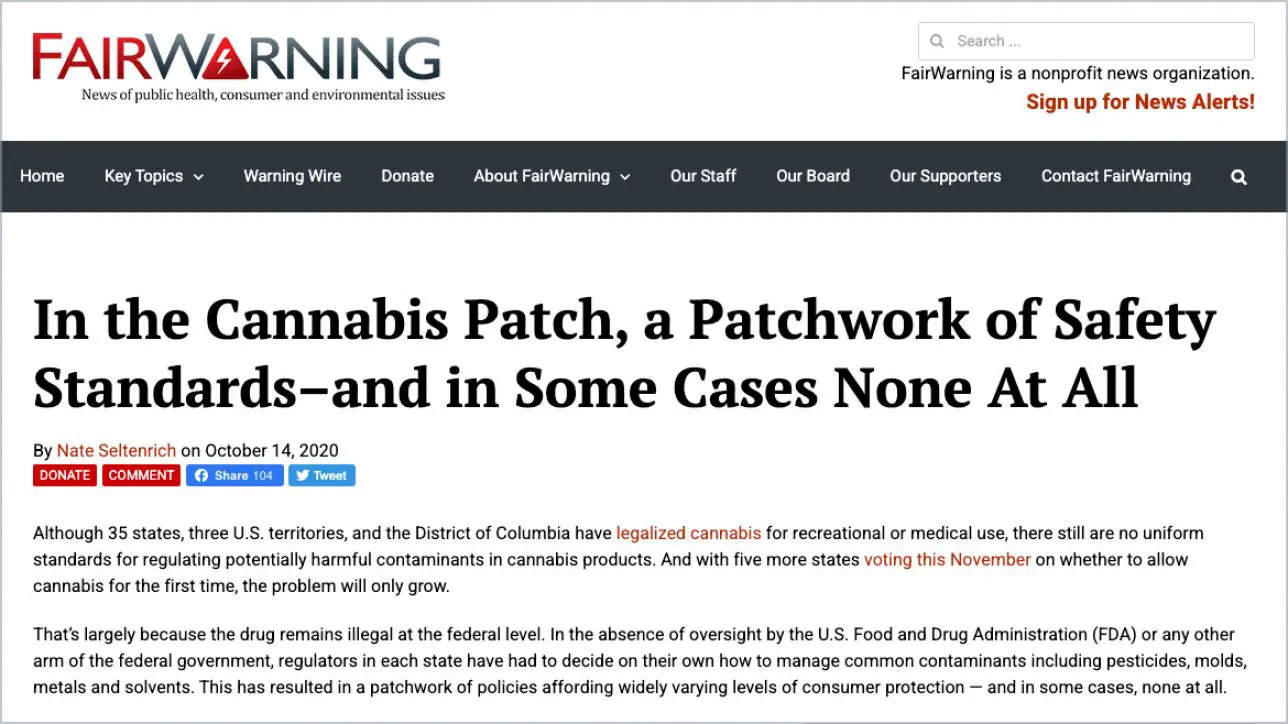Nate Seltenrich, Fair Warning.
Although 35 states, three U.S. territories, and the District of Columbia have legalized cannabis for recreational or medical use, there still are no uniform standards for regulating potentially harmful contaminants in cannabis products. And with five more states voting this November on whether to allow cannabis for the first time, the problem will only grow.
That’s largely because the drug remains illegal at the federal level. In the absence of oversight by the U.S. Food and Drug Administration (FDA) or any other arm of the federal government, regulators in each state have had to decide on their own how to manage common contaminants including pesticides, molds, metals and solvents. This has resulted in a patchwork of policies affording widely varying levels of consumer protection — and in some cases, none at all.
I think regulators will find their way to this document, and certainly I believe that this will be the basis for regulations going forward.
– Josh Wurzer, Co-Founder and President, SC Labs
“Each state successively has put together their own regulations,” said Josh Wurzer, president of California-based cannabis testing company SC Labs. “No two states are alike in their quality requirements.” A report published in April by the United States Pharmacopoeia (USP), a widely respected non-governmental organization whose safety standards for medicines, food ingredients and dietary supplements are often adopted by the FDA, was supposed to…

